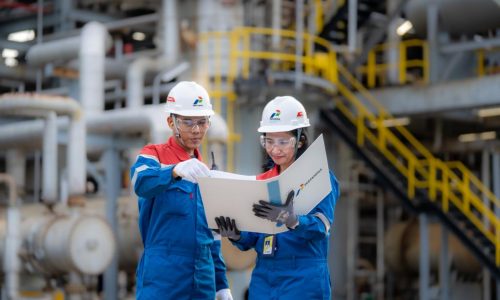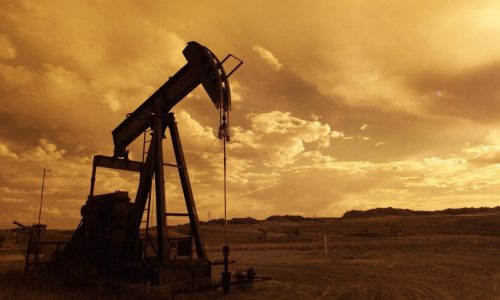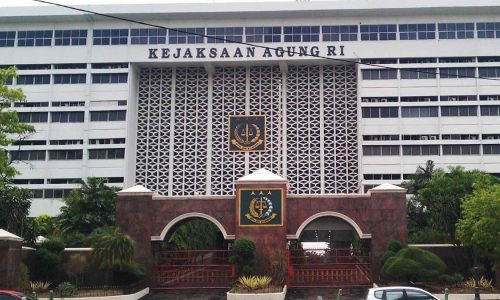A historical port in northern Jakarta continues to operate amidst deteriorating road infrastructure and cluttered landscaping.
It was already dusk when I arrived at Gate 1 of Sunda Kelapa Port on Tuesday 11 June 2024. Five dozens Pinisi ships were docked in a row on the right side of the 1,825-metre-long pier. The wooden ships are predominantly white in color, with red, blue and green stripes. The bow of the traditional two-masted ship of the Bugis ethnic group of South Sulawesi rises up to reveal the elegance of hundreds of years of history of Bugis sailors in the waters of the archipelago. The masts of the Pinisi ships stand upright, pointing to the sky. There was no loading or unloading activity on the pinisi ships that afternoon. From a distance, ship crew members were sitting and chatting, some others were busy cleaning the decks.
Sunda Kelapa Port has a long history in Indonesia. It was built in 1527 during the Portuguese colonial occupation of the archipelago. In 1596, Dutch explorer Cornelis de Houtman and a fleet of four ships arrived at the port. They came to find and control the spice trade route. The presence of this Dutch fleet marked the beginning of the Dutch colonization of the then unnamed archipelago for nearly 3.5 centuries.
Along the port side where the Pinisi ships were moored, piles of sandbags formed a one-meter high embankment. The embankment is enough for a person to pass through.
I climbed to the top of the embankment, which is just a few meters ahead of ankle-deep sea water. About 1,000 meters in front, the road is impassable for pedestrians; after tidal inundation, ankle-deep white mud blocks access to the port. Only large trucks and some petrol tanker trucks belonging to State-owned oil and gas company Pertamina could pass through. The road was muddy with piles of sandbags and rubbish scattered everywhere.
Aceng, 50, a porter at the Sunda Kelapa port, testified that since the last two years, activities at the Sunda Kelapa port dock have been disrupted by seawater seepage or rob flood water into the dock road. The muddy road makes it difficult for porters like him to pass along the pier.
“This is because there is land subsidence, sea water flows onto the road and rises. Even some types of car could not pass through to get to the end of the road. Previously, this road was paved and in good condition,” he said.
The condition was worsened by piles of sand on the left side of the pier that blocked the sea water. Despite the messy condition, loading-unloading and trading activities continue in this northern Jakarta port area.
Aco, 34, a crew member of the Pinisi ship Hidayah Akbar, said that the Pinisi ship he works on will embark on the following night carrying 650 tons of cement to Tembilahan, Riau. The ship, owned by Haji Syukur, a Buginese , was chartered by a cement company.
Aco stood on the hull of the ship, which was docked to the edge of the embankment. We tried to make conversation amidst the roaring sound of a Pertamina petrol tanker truck unloading diesel fuel for the ship along with the sound of engines of neighboring boats.
Slightly shouting, he said that it would take the ship about four days and three nights to sail from Sunda Kelapa to Tembilahan. Aco explained that the ship, which is a charter ship, has no fixed route as it would sail to the port of destination in accordance with the order from the ship charterer.
According to Aco, on average a Pinisi ship can carry 500 tons to 1,000 tons of cement. Upon arrival at their destination, these ships will sail back to Sunda Kelapa and anchor for up to 5 days for the process of uploading goods onto the ship.
He explained that the ship would transport a variety of commodities or goods, such as fertilizer besides cement, depending on the order of the charterer.
In addition to the cement and fertilizer carried by wooden ships, iron ships also carry various manufactured goods such as steel, plastic, and other groceries that are put into containers. “This is still spacious, the containers are over there,” Aceng said.
Elsewhere, a flurry of activities were seen on the port quay. Crane cars were uploading steel poles with a diameter of 5 cm into two blue ships. The steel poles were stacked neatly at the end of the pier while awaiting to be transported into the ship.
Irvan, 36, a security guard at the port, said that the port authority Pelindo is making improvements.
“Containers will be allocated a special place soon, while the road will be cast one meter in height, the same height as the embankment. Meanwhile, old and junk vehicles will be removed,” he said.









